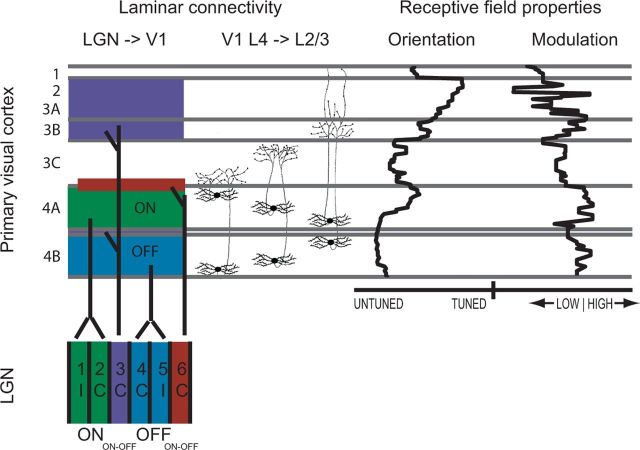Figure 10.
A comparison of laminar connectivity and receptive field properties. Left, Connections from LGN to V1 layers 4 and 2/3 and connections from V1 layer 4 to V1 layer 2/3 (Raczkowski and Fitzpatrick, 1990; Muly and Fitzpatrick, 1992; Usrey et al., 1992). Right, Median orientation index values and modulation index values across these layers (present study). V1 layer 3B exhibits both strong orientation selectivity index values and strong modulation index values, but primarily receives input from the middle of layer 4, which exhibits weak orientation tuning. We speculate that layer 3B may be comprised of orientation-selective simple cells, which in turn may project to V1 layers 2 and 3A, where a majority of cells exhibit complex receptive fields. Orientation selectivity index values continue to increase as one moves superficially in layer 4. These upper layers send short- and long-range horizontal connections across the cortical surface, and these horizontal connections may participate in the sharpening of orientation tuning in these layers (Chisum and Fitzpatrick, 2004).

